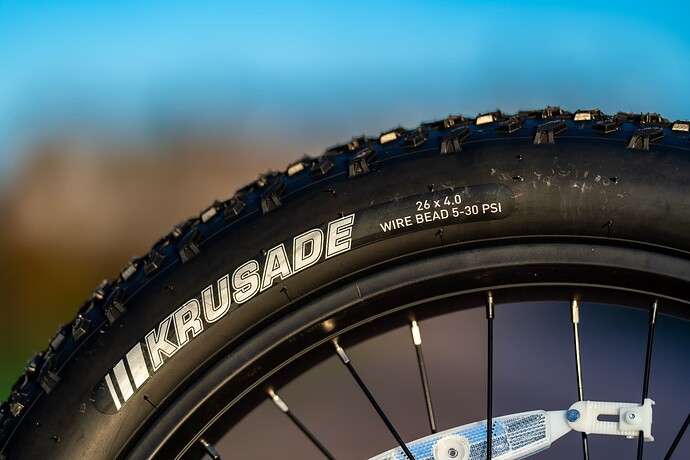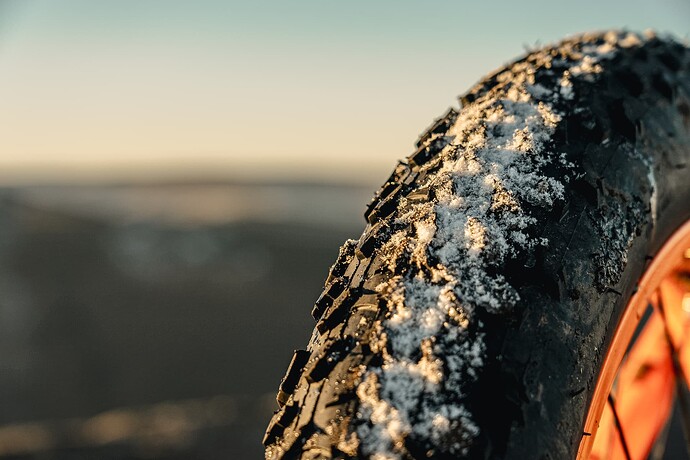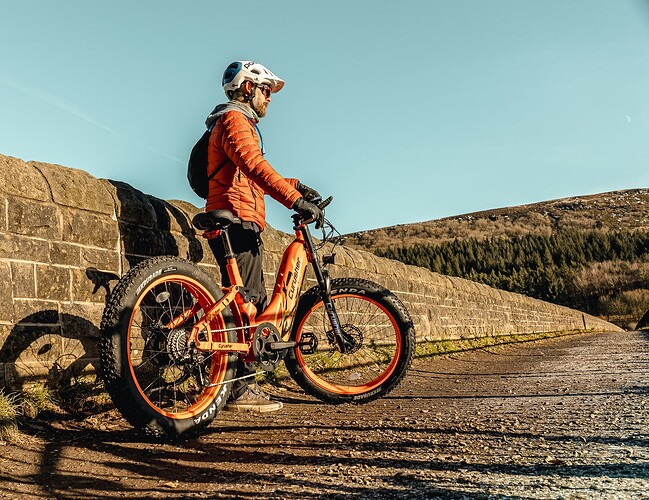Users who have been riding for a while will be aware of how crucial it is to select the proper tire pressure for their e-bike. The tire pressure will impact the life of the tires as well as the speed and distance travelled so it should be appropriate. But selecting the proper tire pressure is a confusing issue for a beginner. You may get some tips on picking the appropriate tire pressure from this page.
Basic information
The pressure in the tires is known as tire pressure. The two units used to measure it are typically the bar and Psi (pound per square inch), with the bar being more prevalent in Spain. The majority of manufacturers continue to use Psi as the preferred measurement system. 1 bar = 14.5 Psi.
The Psi value determines how hard or soft a tire is; the higher the Psi, the more complex the tire. Many tire manufacturers mark the proper upper or lower pressure limit on the inner side of the tire. It is advisable to stay within this limit when choosing a tire pressure to reduce the risk of a blowout.
How to measure tire pressure
Insufficient tire pressure makes it harder for your electric assist bike to move ahead, which means you need more power to do so. Additionally, this implies that a significant portion of your battery capacity will be consumed which will reduce your riding speed and range. Greater tread wear and tear are also caused by increased road friction which can shorten tire life. In light of this, it’s crucial to check your tires’ air pressure periodically. It is important to note that using a tire pressure gauge is recommended instead of feeling the pressure with your hands. It is encouraged that you monitor this using a pressure gauge because as tire values rise, the tires begin to harden and it becomes difficult to identify the difference by hand. The ride will be smoother when the tire pressure is set within the proper range.
How to choose tire pressure
There are several elements that might impact tire pressure in addition to the fact that these differ from vehicle to vehicle and from manufacturer to manufacturer.
Weight
The bike frame, rider weight and cargo weight are among the most important things to consider. This is because weight has a strong relationship with tire pressure. Typically, the pressure needed increases with weight. The speed and distance of the e-bike will be decreased if used by a larger rider or if a heavily loaded bicycle is set at a lower pressure. For a better riding experience, a heavier load will require a higher-pressure option even though the model is the same.
Additionally, lighter riders have a contrary experience. For example, for a rider weighing 150 lb., you could set the tire pressure on the fat tire e-bike at around 15 Psi. It may need to go up another 2-3 Psi as the weight increases.
For riders of different weights who have various perspectives on the riding experience there is, however, no specific fixed value. To get the most comfortable riding experience, you can increase or reduce the Psi according to the recommended tire pressure.
In principle, you have the option of selecting two different tire pressures for the two tires. This is due to research demonstrating that the front and rear wheels do not carry an equal amount of weight. For instance, the rear wheel carries around 60% of the weight since the rider’s weight is mostly distributed across it. The percentage can even be higher than this if there is an additional load to bear. To make your journey more comfortable, you can opt to adjust the rear wheel’s tire pressure a little higher. The front wheels can be set at a lower pressure to improve the grip of the tires and the stability of the vehicle.
Tire width
Psi is impacted by tire width as well. Narrow tires require a higher-pressure setting and the Psi on a traditional bike is often set between 45 to 60 Psi. In comparison, wide tires require a lower setting. More air is contained in a tire because of its wider width. Given this, they may travel at a lower tire pressure — typically around 15 Psi is suitable for flat roads, increasing the rider’s forward traction and riding comfort.
Temperature
The idea of heat expansion and cold contraction is well known. When the tires are exposed to colder surfaces throughout the winter, the air gets more compressed (0.1 bar for every 10 degrees of cooling). Air expands when it is exposed to higher temperatures. Consequently, when riding in different seasons the tire pressure will fluctuate. For instance, you may adjust the Psi to be lower in the hot summer months and higher in the chilly winter months.
Another factor to think about is the weather. Choosing a lower pressure will enhance the tires’ grip and friction which will help you avoid slipping on wet roads. This is especially important on rainy days when the roads become more slippery. Too high a tire pressure contributes to a lot of collisions and skids on rainy days.
Road surface
Tire pressure must be adjusted depending on the kind of road surface.
Road riding : You can set the tire pressure to the recommended level. On smooth roads, there are not many obstacles. Therefore, you may enhance your speed by setting the tire pressure higher. However, higher tire pressure also reduces traction so you must be vigilant at all times to maintain the balance of your electric cycle.
Mountain biking : In rough and rocky terrain, using higher tire pressures is not recommended since it increases the risk of riding accidents. To avoid getting cut by road debris, it’s also crucial to avoid lowering the tire pressure too much. Therefore, remember to adjust your tire pressure lower to improve traction while avoiding obstacles like rocks and branches. To assist you in better absorbing the road bumps on twisting routes, you may also opt to lower the pressure by roughly five Psi.
Soft surface riding : You must set a lower pressure when riding on unstable terrain like mud, sand and snow. Typically, in these conditions fat tires are more advised.
Set an ideal tire pressure for yourself :
-
Avoid exceeding your maximum tire pressure according to the rated tire pressure range given by the manufacturer. Estimate the right tire pressure value for you and use it as a standard and adjust it according to the above conditions.
-
Carry a pump and tire gauge with you at all times when you are out riding. When you feel a significant bump during the ride, adjust the tire pressure down a bit. And, if you feel your ride is straining and the battery is consuming power abnormally fast, you can choose to check if your tire pressure is too low.
-
You can also test out various tire pressures on different terrain to help you decide which pressure is best for you. To choose the proper tire pressure more quickly,
-
Don’t overinflate your tires. While a bike’s resistance to travel is not largely influenced by the pressure of the tires on the vehicle, it’s best to avoid using very high tire pressure settings on your fat tires. This will support riding comfortably.
Check tire pressure regularly
Check the tire pressure periodically. Tire pressure depletes with time whether there is a problem with the tires or not. How quickly you lose pressure can depend on whether there are small holes in the tread, the rate of wear on the tires or the wear between the tires and the wheels. Inadequate tire pressure may also hasten the deterioration of the wheels, increasing your replacement costs. So, be careful to top off your tire pressure before you begin your ride.
Going on more rides is the best way to figure out your ideal tire pressure. Experience is the best teacher. The suggestions in this article are based on certain fundamental principles. Don’t forget that you can jot down notes or communicate with other experienced riders about your experiences.


